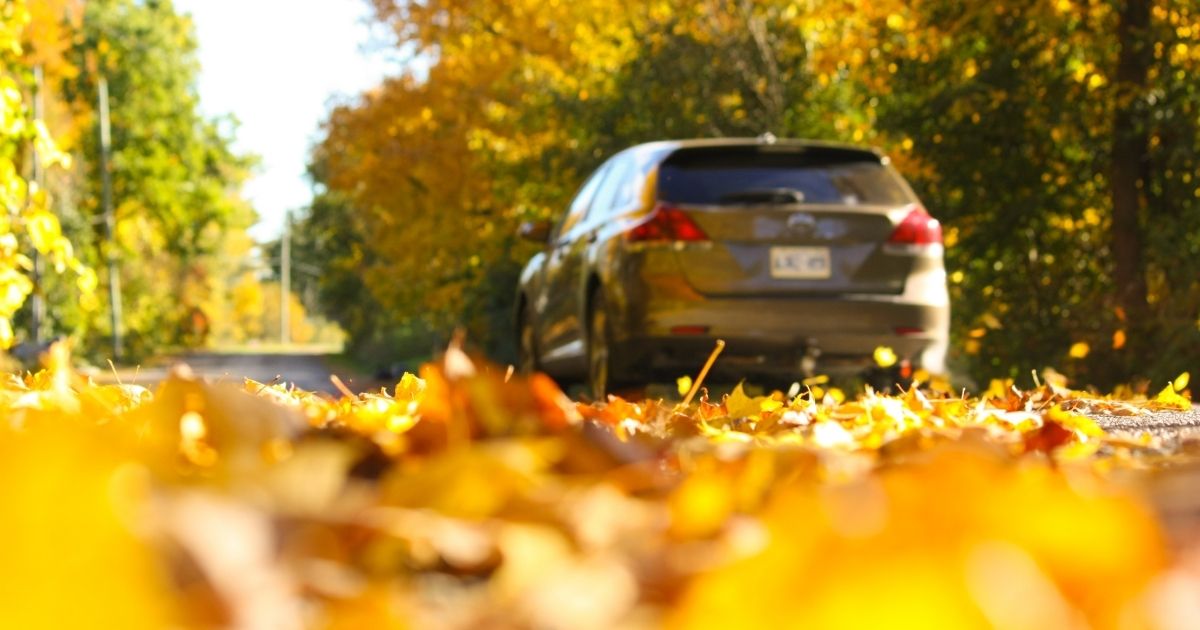There is so much to look forward to with the arrival of fall, such as colorful leaves, cool weather, and a new school year. However, the change of season also comes with some added challenges for drivers. You should learn how to navigate common fall driving hazards to avoid a car accident this season. Listed below are important fall driving safety tips.
Watch for Children Walking to and From School
After an especially long hiatus from in-person schooling due to COVID-19, many children across the region are now back in school. Drivers may have forgotten just how unpredictable young children can be when it comes to heeding traffic signs and signals. While pedestrians always have the right-of-way at a crosswalk, children may not always cross where they are supposed to walk. Always slow down near pedestrians, bus stops, and in school zones. Scan ahead for students running out between cars or crossing in random spots.
The same goes for children who bike to and from school. Drivers must share the road with cyclists, giving them at least 3 feet if they want to pass. If there is not enough room to pass a bicyclist, Virginia passed a law in June 2021 requiring drivers to change lanes when it is safe.
Be Mindful of Fallen Leaves
Fall is a beautiful time of year in Virginia. The changing leaves make for a breathtaking landscape. However, as the wind blows leaves onto the ground, the road surface becomes slipper. When leaves become saturated with moisture, they form a thick mat that reduces tire traction even for new, high-quality tires.
Driving on leafy streets is a lot like driving on ice. If you encounter a slippery road covered with leaves:
- Reduce your speed.
- Accelerate and decelerate slowly.
- Add at least five seconds to your following distance.
- Slow down gradually before a stop. Never slam on the brakes.
If you skid out, take your feet off the pedals, and turn the steering wheel in the direction you want to go.
Do not forget that leaves can also hide potholes, puddles, and road markings. Be extra cautious when traveling on any streets covered in foliage.
Scan Ahead for Deer Crossing the Roads
According to State Farm, drivers in the United States have a one in 116 chance of a collision with an animal. Between July 2019 and June 2020 there were more than 1.9 million animal collision insurance claims filed across the country.
Deer mating season runs from October through December. That means more deer are on the move, more so than any other time of the year. Many wander close to roads and highways, often darting out suddenly in front of passing vehicles.
Deer are more active at dawn and dusk, so be extra alert at those times. If you do see a deer ahead, do not assume they see you. Here are a few tips to avoid a deer collision this fall:
- If a deer crosses in front of you, expect more. They generally travel in groups.
- If there is no oncoming traffic, you can use your high-beam headlights to see better.
- Stay in the center lane of a multi-lane highway. That gives you more time and space to react if a deer darts onto the road.
- Never swerve to avoid a deer. Instead, stay in your lane, and apply the brakes.
- Honk the horn to scare them off.
If you do hit a deer or any other animal, pull off to the side of the road when it is safe. Turn on your hazard lights. Call emergency services if anyone in your vehicle is injured. Do not attempt to go near the deer.
Prepare for More Nighttime Driving
In the fall, drivers will find themselves spending more time traveling in the dark. The National Safety Council (NSC) cautions that depth perception and peripheral vision can be compromised in the dark, and the glare of headlights can blind drivers. To make night driving safer for you and your passengers, be sure to clean your windshield to eliminate glare, check your lights to ensure they are in good working order, increase your following distance, and reduce your speed.
Slow Down for School Buses
You have probably noticed school buses now that school has started. When you are near a school bus, you must:
- Stop for any stopped school bus with flashing red lights and an extended stop arm when approaching from any direction.
- Stop anytime a bus is loading or unloading passengers, even if the stop lights and stop arm are not engaged.
- Remain stopped until everyone is clear and the bus begins moving.
While sharing the road with slow-moving school buses requires a bit of patience, it is critical to obey the law and keep every child safe as they walk to and from the bus.
Check Tire Pressure More Often
Tires are safer and more effective on wet surfaces if they have sufficient tread. Proper air pressure helps tires move safely and smoothly and reduces the risk of a dangerous blowout. Every tire loses some amount of air pressure over time, and cooler weather accelerates that loss.
Check your vehicle manual or the decal on the inside of the door jamb on the driver’s side for the proper air pressure for your tires. You can use a handheld portable inflator or one at your local gas station or mechanic to determine your tire’s air pressure and fill it to the proper pound per square inch (PSI).
Be Prepared for Fog and Frost
As autumn returns, the temperature begins to dip. Cool fall mornings often come with fog and even frost. If you have fog lights, you can use them in addition to your regular headlights for better visibility. However, you should avoid using your high-beams. That bright light actually reflects off the fog, making it harder to see. If you are expecting cold weather, give yourself some extra time to clean the frost off your windows, mirrors, and backup cameras.
Keep an Emergency Kit on Board
It is always a good idea to keep a well-stocked safety kit in your vehicle in case you have an accident, breakdown, or some other emergency. Your emergency kit should include:
- Basic first-aid supplies
- Non-perishable foods
- Bottled water
- Warm blankets
- Flashlight and extra batteries
- Flares and/or traffic cones or triangles
- Portable phone charger
- Warm hats and gloves
Fall is a favorite time of year for many people. For drivers, autumn means sharing the road with children, school buses, and animals. With a proactive approach to traffic safety and a bit of patience, you can have a safe autumn.
Virginia Beach Car Accident Lawyers Represent Clients Injured in Autumn-Related Collisions
While you may take safety seriously while driving, there is no guarantee those traveling around you are taking the same precautions. If you were injured in a fall-related collision, speak with one of our Virginia Beach car accident lawyers. At East Coast Trial Lawyers, we are here to help you after a serious traffic wreck. Call us at 757-352-2237 or complete our online form for a free consultation. Located in Virginia Beach, we serve clients throughout Chesapeake, Eastern Shore, Hampton, Newport News, Norfolk, Portsmouth, and Suffolk, Virginia, as well as North Carolina and nationwide.


